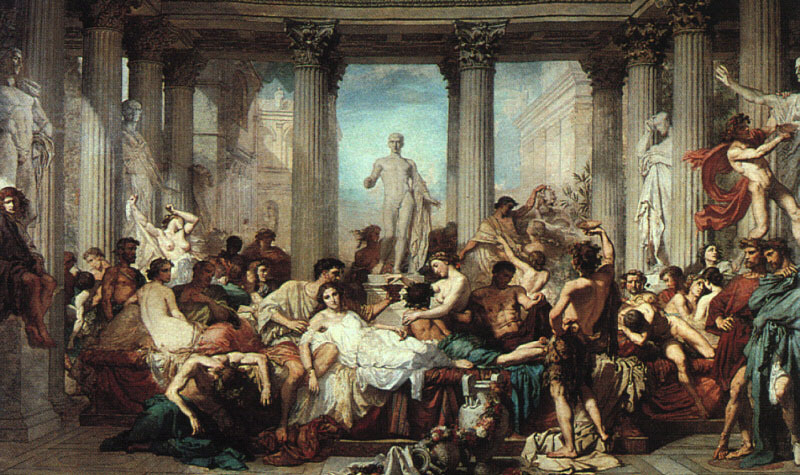People are not hedonists. Scientists have determined why we do unpleasant work when we are happy

Tom Couture "The Romans of times of decline" (1847, Paris, Orsay Museum)
Every day a person makes routine decisions on what to do at the moment, what to spend time on. These decisions have important implications both in private life and for the whole of society. Most motivation theories suggest that a person makes daily choices of activities in order to maximize the generation of positive emotions. That is, man is driven by the principle of hedonism, the maximum enjoyment of life. Allegedly, pleasure is the highest good and purpose.
But these theories cannot explain why people choose to undertake unpleasant work, such as cleaning an apartment.
An international team of scientists from Spain, the United States, Great Britain and Belgium conducted a large-scale study of this problem in a sample of more than 28,000 people - and published the results in the scientific work “ Hedonism and the choice of daily activities ”. The results were very interesting.
')
During the study, scientists carried out continuous real-time monitoring of daily activities and moods of more than 28,000 people, on average, for 27 days, using a multiplatform mobile application for 58 sec (French language program).
After analyzing the results obtained, the scientists concluded that people decide on the choice of activity, guided by the principle of "plastic hedonism." This means that a person seems to be striving to balance his emotional state. In a bad mood, people tend to choose activities that they enjoy and improve their mood, such as playing sports. On the contrary, in a good mood a person is inclined to choose an occupation that worsens his mood, for example, to do an apartment cleaning.
The research results speak for themselves. The left diagram shows the probability that a person will engage in a certain type of activity after improving his mood by 10 points. The right diagram shows how the person’s mood has changed after engaging in this type of activity.

As you can see, the correlation is very strong. In a good mood, a person is less inclined to playing sports, going to nature, talking, taking alcohol, playing games, eating food and spending time in general - everything that improves a person’s mood as much as possible. By the way, the right diagram with the indicator which classes in life most improve mood is also quite useful.
On the contrary, in a good mood a person is more inclined to do things after which his mood deteriorates, that is, he calms down - this is waiting, work (work), sleep and housework.
According to scientists, thus the human brain uses short-term success (positive mood spikes) to achieve long-term well-being. This is a kind of compromise between short-term happiness and long-term well-being. The authors of the scientific work say that overcoming such compromises "may be critically important for our personal well-being and survival as a species."
There are several exceptions in the scientific results that do not fit into the detected trend. First, it is meditation. A person is more likely to meditate in a good mood, but at the end of meditation a good mood disappears, and calm comes, that is, the mood gets worse. And there is another activity that a person is a little more inclined to do in a good mood, but as a result, his mood improves even more (shopping in stores).
Unfortunately, the authors do not give calculations separately for men and women, as well as by age and social status. It is possible that there are certain differences. Of course, each person has his own characteristics: an occupation that improves one’s mood can worsen the mood of another. For example, the “happiest” lesson in a diagram is a game of sports — not everyone likes. Some people, after intense physical exertion, feel exhausted, and not at all happy. The same applies to other daily activities that scientists have been tracking.
The scientific work "Hedonism and the choice of everyday activities" was published on August 15, 2016 in the journal Proceedings of the National Academy of Sciences (doi: 10.1073 / pnas.1519998113).
Source: https://habr.com/ru/post/396831/
All Articles